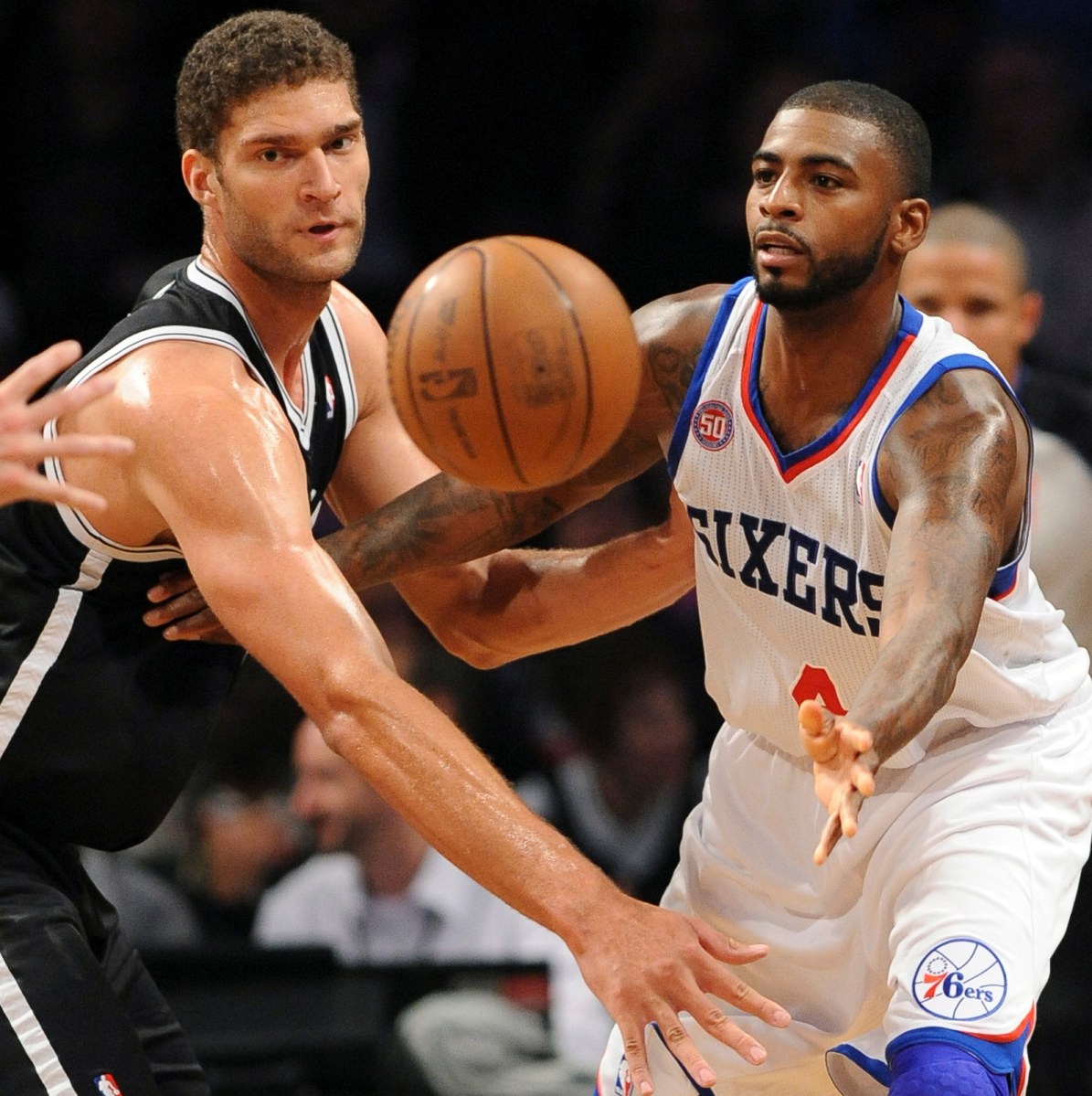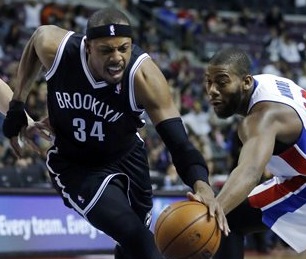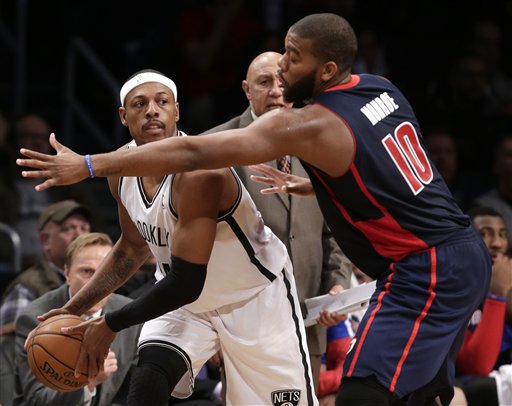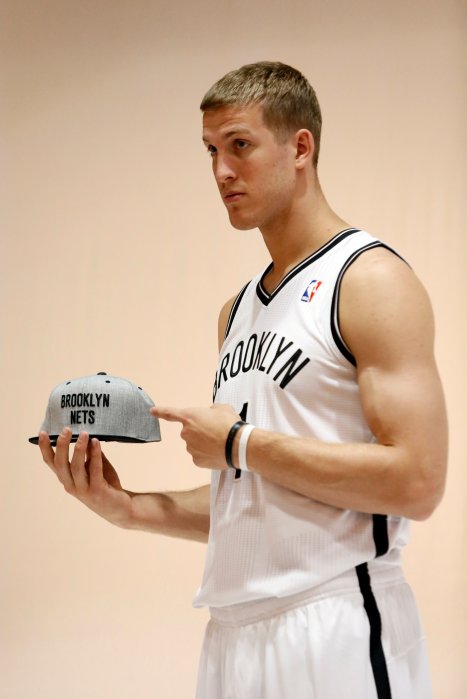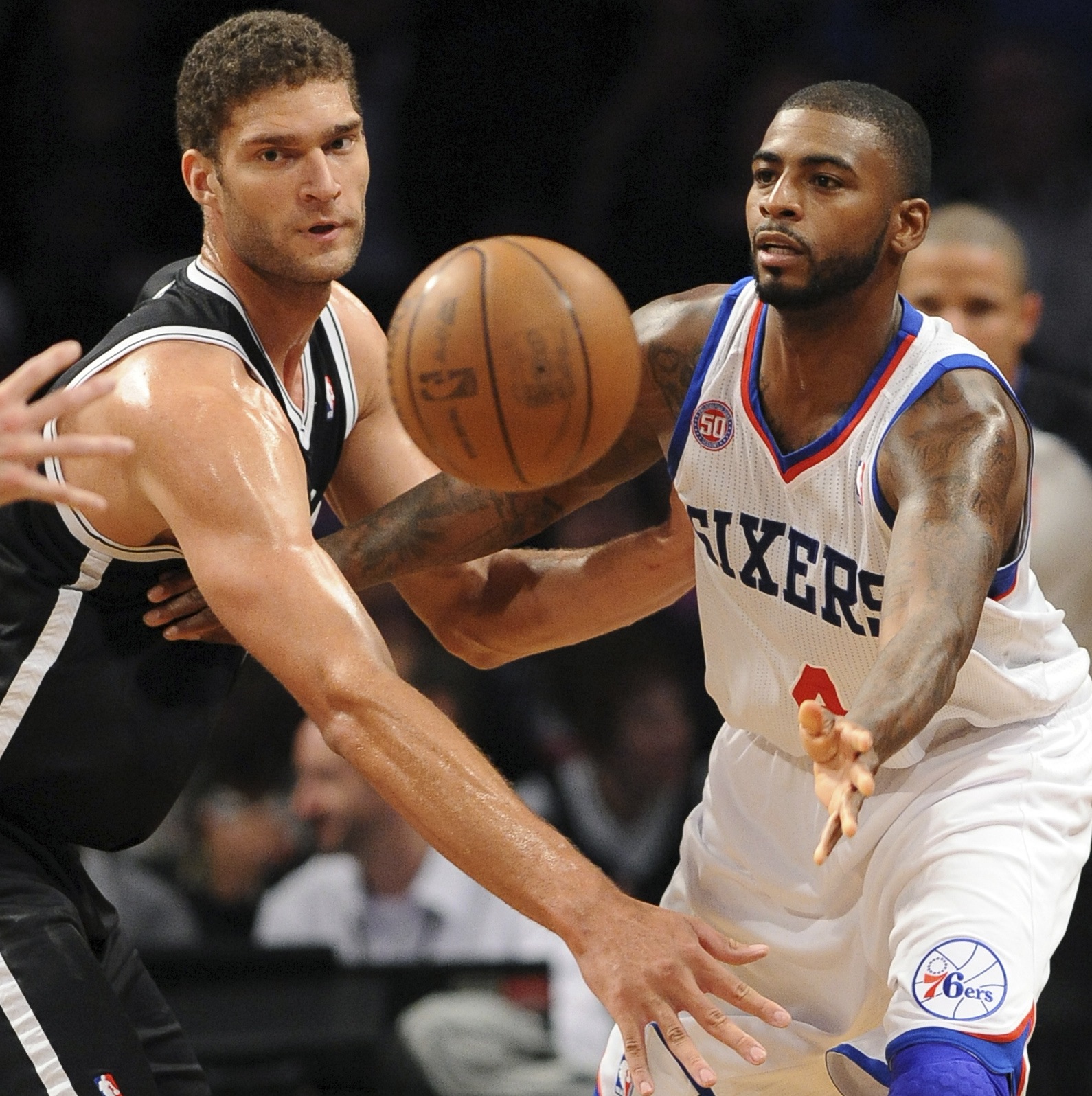 First impressions can make an indelible impact on us as human beings. Once we have an idea of what makes a person, place, or thing, it’s difficult for them (us) to shed that perception. In sports, it’s part of the reason why players considered to have high potential continue to get second, third, and fourth chances despite having played at below-average levels; conversely, it’s why players that sign surprise-high contracts with substandard numbers tend to have a poor league-wide image.
First impressions can make an indelible impact on us as human beings. Once we have an idea of what makes a person, place, or thing, it’s difficult for them (us) to shed that perception. In sports, it’s part of the reason why players considered to have high potential continue to get second, third, and fourth chances despite having played at below-average levels; conversely, it’s why players that sign surprise-high contracts with substandard numbers tend to have a poor league-wide image.
Sometimes those perceptions are borne from comparison. No less than a half-dozen guards were compared to Michael Jordan once Jordan passed the baton in the late-90s. None of them lived up to those lofty standards, and as a result they’re often considered by their flaws, rather than their accomplishments.
For many, Brook Lopez didn’t make much of an impact in his first two seasons. Lopez toiled on a terrible New Jersey team, one that was “50-50” on the Brooklyn move, and outside of a chase towards 70-loss infamy, didn’t receive much press. Once Lopez became the focal point of a team moving to Brooklyn, as the lynchpin of a deal for Dwight Howard, he became thrust into the spotlight. It was at that moment when he began to fall apart: his defensive effort plummeted along with his rebounding, and his standing as a potential Howard chip turned him into a joke.
We rarely hear how Greg Monroe stacks up with Howard, but the Pistons’ defense has ranked 28th and 22nd these past two seasons with Monroe playing 2000-plus minutes. DeMarcus Cousins is generally thought of as the next great center if he keeps his head on straight, but Sacramento’s defense this year ranked worse than the New Jersey defense anchored by Shelden Williams. Both of these players receive criticism, particularly Cousins, but I would say that neither are so dissected defensively as Lopez.
I didn’t always consider Lopez a defensive sieve. In his first year, he broke the Nets’ rookie record for most blocks in a season (151), and though no one would confuse him with Howard, Lopez had some truly good moments on the defensive end. My personal favorite is a Javale McGee alley-oop block and staredown, immortalized only in one “Where Amazing Happens” fan video hidden deep in YouTube:
Lopez uses his frame extremely well, and this is especially apparent in his rebounding numbers, given the fact that he isn’t a great leaper. He stands tall and always pursues the ball with two hands, therefore never getting the ball knocked away or getting stripped by guards coming in from behind. He shows his great hands when rebounding and is often coming down with boards in traffic –a clear sign of a good rebounder. There’s definite reason to believe Lopez will be a double-double guy down the road, even if it did not appear that way at all when he first arrived at the college level.
He’s currently averaging 8 rebounds per game in just under 30 minutes, which translates to 11 rebounds per 40 pace adjusted –a very impressive stat—and somewhat surprisingly, identical to his numbers as a college sophomore. His work ethic and perseverance also have a lot to do with these numbers. He never gives up on a rebound no matter how out of reach it may be. With more experience and added minutes, Lopez will regularly be among the NBA’s top rebounders. On a team that’s been looking for the right fit at center for what seems like the last decade, Lopez has to be a breath of fresh air for the Nets.
Lopez is a deceptively good athlete for someone of his size, especially considering his reputation. His athleticism is almost hidden in a way because of his awkwardness on the offensive end and the fact that he won’t dazzle anyone with a play or a move. With that said, he’s one of the better running big men in the game today, regularly beating opposing big men down the floor thanks in large part to his huge stride-length and great stamina.
Defense
Lopez has been terrific on this end of the floor. He’s very active and always in tune to what’s going on around him. He currently ranks 5th in the league in blocked shots, with 1.9 per game. While that is an impressive stat, the way Lopez records those blocks is equally impressive; often keeping the ball in play to spark the Nets high powered fast break. He does a great job of staying in his stance for whole possessions as well. He’ll often dip down into an athletic position when the ball is on the perimeter and muscle his man out of the paint. He’s able to do this and stay out of foul trouble –a truly uncommon characteristic of most young centers in the NBA today. He doesn’t leave his feet a lot or over commit, showing good discipline in standing his ground and getting his hands up to alter shots with his giant standing reach.
Despite his average lateral quickness, Lopez does a fairly good job against quicker big guys who like to play away from the basket due in large part to his fundamentals. He keeps one hand up and in his man’s face, using his great length to contest shots while leaving a cushion to deny penetration. He shouldn’t be left alone often on the perimeter with quicker players, but Lopez can hold his own against many players his size by being smart and not being too aggressive.
Lopez uses that same awareness to make his presence felt as a weak side defender, acting like a wall when guards try to penetrate. At times he can be a little too stiff as he’s reluctant to foul, making it easy for players to finish around him. The one thing that can never be questioned about him is his effort. He contests all shots, and even on possessions where he’s late to recover and has no chance of blocking the shot, he’ll sprint out and do whatever he can to bother the shooter. He also does a nice job hedging out on screens to slow up the opposing guard before rotating back to his man with his hands in the air to deflect any pass coming his way. Despite his lack of lateral quickness, it is clear that he’s well-schooled in how to compensate for it on the defensive end.
When defending the block, he works hard to front or three-quarter front his man to make for a difficult post entry pass. When his man does get the ball, he uses his strong upper body to make it difficult for his man to back him in as he bodies up with his chest as he did in college. He’s been somewhat foul prone at times, but should be able to improve in this area as he gains more experience.
This unbridled optimism was a common appraisal of Lopez’s attributes — this is what the Nets thought they had; a huge center with average athleticism, decent rebounding numbers, and smart, effort-laden defense. The team rebounded better with him on the floor (grabbing 49.8% of all available rebounds with him on the court, opposed to 47.7% with him off it), played a faster pace by over two possessions a game, and didn’t see a dip in their overall defensive rating. Though the Nets ranked poorly in team defense in Lopez’s rookie season (24th), here’s the rest of the team’s big man rotation: Yi Jianlian, Ryan Anderson, Josh Boone. Lopez wasn’t a defensive stalwart, but that team’s big men lacked in defensive depth as much as any team since. He did what he could, and as DX said, you couldn’t question the effort.
I spent the last couple days watching some footage from Lopez’s first two seasons, games when the Nets didn’t play good overall defense. What I saw of Lopez confirmed my own past bias: Lopez was not fast but ran the floor, not quick but active on the defensive end. The current form of Lopez, the one most of America’s seen since 2011, is 0-4 in those categories.
He didn’t step six feet back on pick-and-roll covers instinctively. He didn’t abandon teammates on help rotations. He got beaten by quick guards driving to the basket, but did what he could to cut off lanes and used his frame to force wing penetrators baseline under the basket. He was an average, solid slow rookie center with a huge body, an interest in rebounding, and room to grow. In his second season (the 12-70 year), he ranked 9th in the NBA among all centers in points per possession allowed (minimum 500 plays, thanks to Synergy Sports Technology), and was involved in more plays than anyone above him.
This was my first perception of Lopez. Though he’s done an excellent job shaking it since those first two seasons, I can’t help but hope that he’s more that player than the current perception: the unenthused lumberer with no chance and less intention of stopping anyone.
Doubtlessly, you can question his effort now. I don’t wish to say that Zach Lowe (who wrote an excellent piece on Grantland dissecting Lopez’s issues) or any other critic is incorrect in their assessment of Brook Lopez. In his past 87 bodies of work, he’s been awful, and I don’t think he’ll ever become a “good” defender or rebounder for a center.
What I am hoping is that there’s room for nuance in this analysis; that perhaps Lopez isn’t solely a player you can’t win with, but a player who had the tools to succeed, lost it somewhere along the way, and now, surrounded by offensive weapons for the first time since that rookie season, has a chance to grow once again.
Statistical support for this story was provided by NBA.com.

